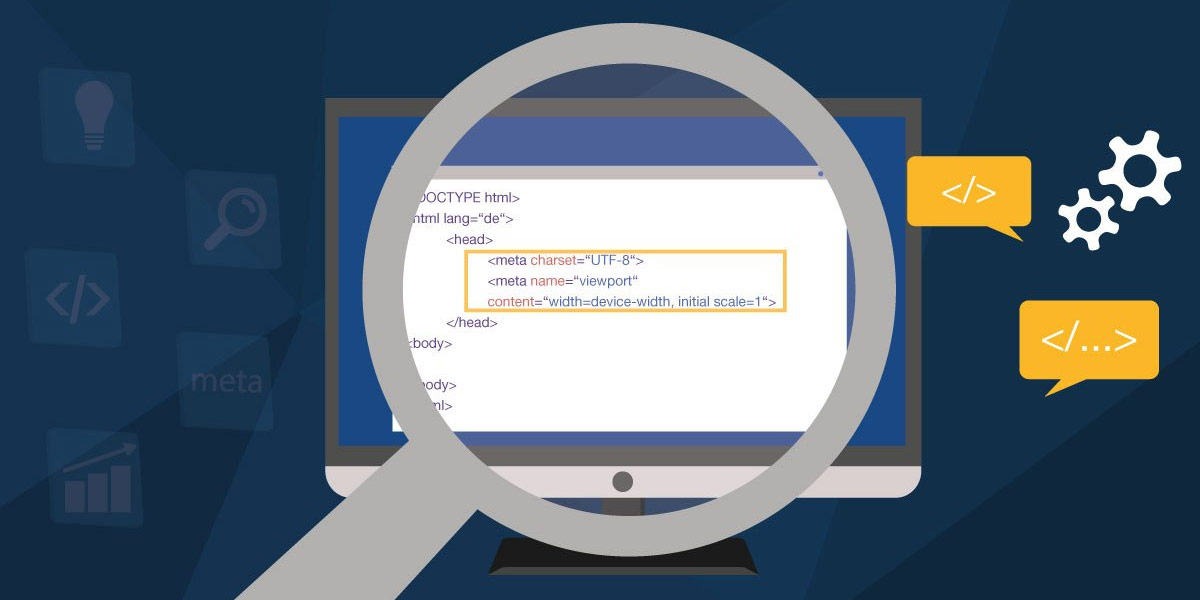How to Write Meta Titles and Descriptions for Better SEO

When it comes to optimizing your website for search engines, writing effective meta titles and descriptions is crucial. These two elements not only inform search engines about the content on your website but also entice users to click through to your site from search results. In this article, we’ll cover everything you need to know about writing compelling meta titles and descriptions that will help improve your website’s SEO.
What are meta titles and descriptions?
Meta titles and descriptions are HTML elements that provide information about the content of a web page to search engines and users. They are often referred to as “meta tags” or “metadata”.
The meta title (also known as the page title or title tag) is a brief, concise summary of the content on a web page. It typically appears as the clickable headline in search engine results pages (SERPs) and is the first impression users have of your website.
The meta description, on the other hand, is a summary of the content on the web page that appears beneath the meta title in SERPs. It provides a brief overview of what the page is about and why users should click through to read more.

Why are meta titles and descriptions important for SEO?
Meta titles and descriptions play a critical role in on-page SEO. They are among the first things search engines look at when indexing a website, and they can have a significant impact on your website’s search engine ranking and click-through rate (CTR).
When writing meta titles and descriptions, it’s important to consider search engines and users. Search engines use these elements to understand the content of your website and determine how relevant it is to a user’s search query. Users, on the other hand, use them to decide whether or not to click through to your website from search results.

How to write effective meta titles and descriptions
Now that you know what meta titles and descriptions are and why they are important for SEO, let’s take a look at how to write effective ones.
Keep it relevant to the page content
Your meta title and description should accurately reflect the content on the page. This means using specific, descriptive language that accurately summarizes what users can expect to find on your website. Avoid using generic language that could apply to any page on your website.
Use keywords wisely
Keywords are an important part of SEO, but it’s important to use them wisely in your meta titles and descriptions. Avoid stuffing them into the content or using them unnaturally. Instead, focus on using relevant keywords that accurately describe the content on the page.
Keep it concise
Both your meta title and description should be concise and to the point. Aim for a meta title that is no more than 60 characters and a meta description that is no more than 155 characters.
Write for the user
While search engines are important, it’s ultimately the user who will be reading your meta titles and descriptions. Write in a way that is engaging, informative, and helpful to the user. Use language that is easy to understand and avoid using jargon or technical terms that might confuse the reader.
Use calls-to-action (CTAs)
Calls-to-action (CTAs) are an effective way to encourage users to click through to your website. Use action-oriented language and a sense of urgency to encourage users to take action, such as “Learn More”, “Download Now”, or “Sign Up Today”.
Avoid duplication
Each page on your website should have a unique meta title and description. Avoid duplicating the same meta title and description across multiple pages, as this can lead to confusion for both users and search engines.
Consider the brand
Your meta title and description should reflect your brand and the unique value proposition of your website. Use language that is consistent with your brand messaging and tone of voice.
Don’t forget about localization
If your website targets multiple regions or languages, it’s important to create unique meta titles and descriptions for each one. This will help ensure your website appears relevant and authoritative to users in each location.

Best practices for formatting meta titles and descriptions
In addition to writing effective meta titles and descriptions, it’s also important to format them correctly. Here are some best practices to follow:
Optimize the length
As mentioned earlier, aim for a meta title that is no more than 60 characters and a meta description that is no more than 155 characters. This will help ensure that your entire meta title and description is visible in search results.
Use separators
Use separators such as pipes (|), hyphens (-), or colons (:) to separate different elements in your meta titles, such as the brand name and the page title.
Capitalize effectively
Capitalization can help make your meta title and description stand out in search results. Use title case (capitalizing the first letter of each word) for your meta title and sentence case (capitalizing only the first word and proper nouns) for your meta description.
Avoid special characters
Avoid using special characters such as hashtags (#), exclamation points (!), or ampersands (&) in your meta titles and descriptions. These can interfere with how search engines display your content in search results.
Use rich snippets
Rich snippets are additional information that can be added to your metadata to provide users with more context about your website. This might include star ratings, product prices, or event dates.

Conclusion
Writing effective meta titles and descriptions is a crucial part of on-page SEO. By following the best practices outlined in this article, you can help improve your website’s search engine ranking and click-through rate (CTR). Remember to write for both search engines and users, keep your meta titles and descriptions concise and relevant, and format them correctly for maximum impact.
In conclusion, crafting effective meta titles and descriptions is an important part of on-page SEO. These meta SEO tags provide a summary of the page’s content and help search engines understand what the page is about. By including relevant keywords and providing a clear description of the page’s content, you can increase the chances of your page ranking well in search engine results pages (SERPs) and attract more organic traffic to your website.
Remember to keep your meta titles and descriptions concise, engaging, and relevant to the user’s search query. Avoid keyword stuffing and ensure that your meta tags accurately reflect the content on the page. By following these best practices, you can improve the visibility and click-through rates of your website’s search results, ultimately leading to increased traffic and conversions.
So, always keep in mind the importance of meta SEO tags and invest time and effort in crafting them properly. With the right approach, meta titles and descriptions can play a vital role in your overall SEO strategy and help you achieve your online marketing goals.
FAQs
What is the difference between a meta title and a page title?
A meta title is an HTML element that provides information about the content of a web page to search engines and users, while a page title is the main heading that appears at the top of the page.
How many keywords should I include in my meta title and description?
It’s important to use relevant keywords in your meta title and description, but avoid stuffing them into the content or using them unnaturally. Aim for one or two primary keywords that accurately describe the content on the page.
Can I use the same meta title and description for multiple pages on my website?
Each page on your website should have a unique meta title and description to avoid confusion for users and search engines.
What are rich snippets?
Rich snippets are additional information that can be added to your metadata to provide users with more context about your website, such as star ratings, product prices, or event dates. These can help make your search results more visually appealing and increase click-through rates.
Should I use my brand name in my meta title and description?
Yes, including your brand name in your meta title and description can help increase brand awareness and recognition among users. However, be sure to balance it with relevant keywords and a clear description of the page’s content.
How do I know if my meta descriptions are effective?
You can use tools like Google Search Console or a third-party SEO tool to see how many impressions and clicks your search results are receiving. If you notice a low click-through rate, consider revising your meta description to make it more compelling and relevant to the user’s search query.
Can I use emojis in my meta descriptions?
Yes, you can use emojis in your meta descriptions to add visual interest and convey emotion. However, be careful not to overdo it and ensure that the emojis are relevant to the content on the page.
How long should my meta description be?
There is no specific character limit for meta descriptions, but it’s recommended to keep them between 120-155 characters. This ensures that your entire meta description is visible in search results and doesn’t get truncated.
Can I automate the creation of my meta titles and descriptions?
While some SEO tools offer the option to automatically generate meta titles and descriptions based on the content on the page, it’s generally recommended to manually craft each meta tag to ensure relevance and clarity. Automated meta tags may not accurately reflect the content on the page and could potentially harm your SEO efforts.

